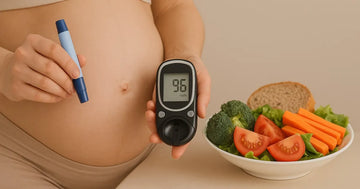
Image Credit: AI
The breaking of your water means that your amniotic sac has ruptured and you are ready for labour. Many pregnant women are curious about their water breaking. What will happen next, how it feels, and what to do once the water breaks? These are common questions that cross every pregnant woman’s mind.
What Happens When Your Water Breaks?
The baby is surrounded by a fluid-filled membranous sac called the amniotic sac. When the water breaks, this membrane ruptures. If the membrane ruptures before labour begins, it’s called premature rupture of membranes (PROM). When the water breaks, you may feel a sudden gush or ongoing trickle of fluid from the vagina and there will be constant leaking of small amounts of watery fluid from the vaginal area. Unlike peeing, you will not have any control over this fluid. The colour is usually clear or pale yellow.
Also read: 10 Important Tips For Having A Normal Delivery
How To Be Sure That Water Has Broken?
It is not always easy to identify the breaking of water. It can be difficult to differentiate between amniotic fluid and urine during pregnancy. If the leaking is due to amniotic fluid, then it is usually colorless and odorless. Amniotic fluid doesn’t smell like urine and has a sweetish smell. You will also notice bloody flecks and whitish flecks of mucus. A woman can pass 3 types of fluids from down under. These are:
1. Amniotic fluid
If you are wet even after passing urine, then it can be due to the leaking of water (amniotic fluid). It often occurs when the baby’s head is engaged in the pelvis, creating pressure on the cervix.
2. Urine
Leaking of the bladder is common during the 2nd and 3rd trimesters. It’s likely to be urine if it has the following characteristics.
- The colour of the liquid may be yellow or a dark shade of yellow.
- It could contain the odour of urine or ammonium.
3. Vaginal discharge
Vaginal discharge usually has these features:
- Usually has yellow or white colour and does not smell like urine.
- The consistency is thick compared to the urine /amniotic fluid.
Also Read: The Truth About Episiotomy: Tips No One Will Share
What To Do When Water Breaks
As soon as you confirm that indeed your water has broken, do the following:
- Note the time when your water breaks, as it is crucial for the delivery.
- Use sanitary pads to absorb the fluid and prevent a mess.
- Avoid inserting anything into your vagina, it can lead to infection.
- Call your doctor or visit the hospital.
Conclusion
Understanding when your water breaks is crucial since this could mean that labour has begun. A quick trickle or flow of liquid from the vagina, wetness in your underwear or other clothing and and a sensation of dampness around the vaginal area are some typical symptoms of water breaking. The fact that the fluid appears to leak more while standing indicates that the water has broken. Understanding the signs of water breaking can help you know when to seek medical attention, ensuring that you and your baby are healthy and ready for labour.
When you visit the hospital, you will be examined via a sterile vaginal exam to confirm the membrane rupture, and then you will be prepped for labour.
Shop all Morph essentials, including maternity incontinence panties, for an extra 10% off using code "WATERBREAKS."
































































